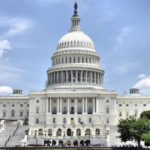Every year when we were kids, myself and my brothers and sister would color Easter eggs the Saturday before Easter Sunday. Later that night, after we were all asleep, my mother, father, and any other dinner guests would hide those Easter eggs for us while we were sleeping.
The next morning, we’d wake up and there would probably be about three dozen Easter eggs hidden throughout the house. Our job as children was to find all of the hidden eggs.
One year the Saturday adult dinner party ran particularly long. Cocktails and several bottles of wine were consumed before the “hiding of the eggs” took place.
The next morning, we found about 24 of the eggs but could not find the rest of them. Foggy from the night before, my parents could not remember the exact location of the missing eggs either. We were urged to look harder but we couldn’t find any more.
And so, of course, a few days later the missing eggs turned up, all in places small children would not be able to reach.
Some were inside the vertical shade of a tall floor lamp. Others were behind photos on high book shelves. A couple were in the deep recesses of the living room couch. Real eggs (starting to rot) eventually make their presence known by their smell.
Even Easter eggs that are lost get found sooner or later.
I like to use this metaphor when talking about innovation.
There are an infinite number of “Easter eggs” out there in the world — new technologies, new processes and new innovations — and we haven’t found them all yet. Not even close.
We’re not even sure what the inventory of these “eggs” is, but we do know that we haven’t run out of them yet. There are still plenty of them out there to be found.
Once a customer and an entrepreneur get together and reveal a new Easter egg, that’s when we know how valuable each opportunity is going to be, how effectively it can grow the economy. What we need now are people out finding these Easter eggs, identifying new economy-driving innovations, to start the process.
Order in randomness
It begins with interactions between entrepreneurs and customers. The more we can increase the back-and-forth between those that are solving problems and those that have problems they need address, the more new industries we can create and the more we can drive GDP growth.
Some will say that this seems sort of random, and it is sort of random. But improving these information flows is more organic than it seems.
It’s like if you send two dozen 18-year-olds downstairs into the basement for a graduation party they’re going to come back upstairs drunk, even if there is no liquor down there. They’re going to figure out how to find liquor. It’s just going to happen, even if it seems impossible.
You don’t know how many it’s going to be, but a certain amount of the two dozen will have figured it out and they’ll come up drunk. Any passive observer would know that was gonna happen with certainty, they just don’t know which kid it was going to be.
To quote Dr. Ian Malcolm in “Jurassic Park”: Life finds a way.
Take more shots
So, as entrepreneurs, we don’t necessarily need to know exactly how many customers we’re going to find as part of these meetings, because there’s going to be a consistent amount that will buy. All we need to do is increase the opportunities.
The more we can increase these interactions between customers and innovators, and have money present to help them move forward, the more we’re going to find the Easter eggs.
In the modern economy, the only limit to growth is how many customers and entrepreneurs we can get together.
That’s it.
Unlike in classical production — for example, if you’re mining iron ore, you’re limited in how much you can grow by how much iron ore is in the ground — now if you’re generating a lot of consumer welfare, and if you’re working more from information rather than classical production, value can be created at any time.
The system only has so many natural resources available. But, in our case, the natural resource is the ability to use information to create consumer welfare.
It’s our job to make sure we put that information to work.












